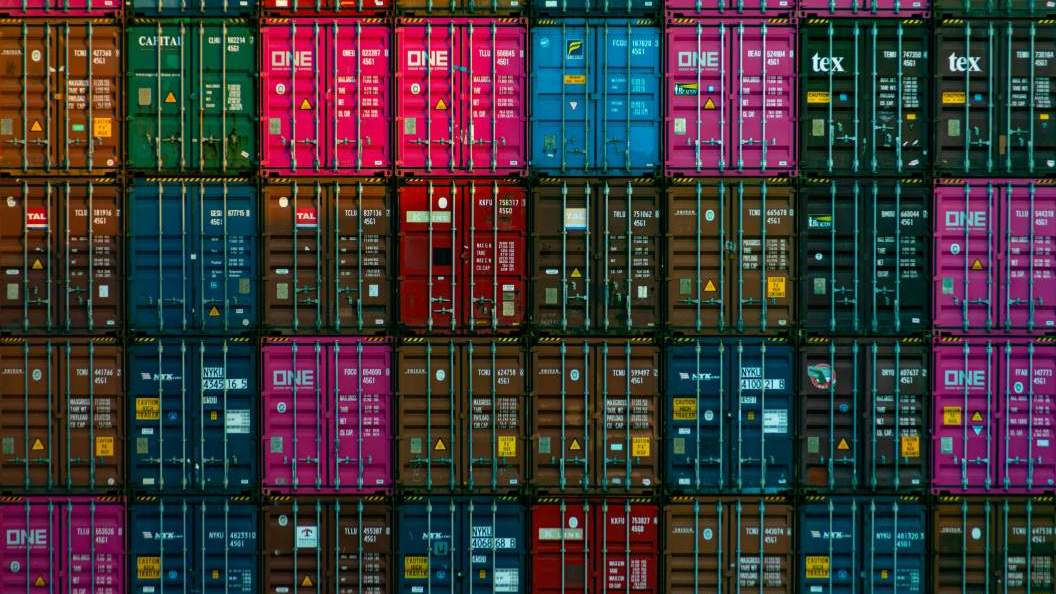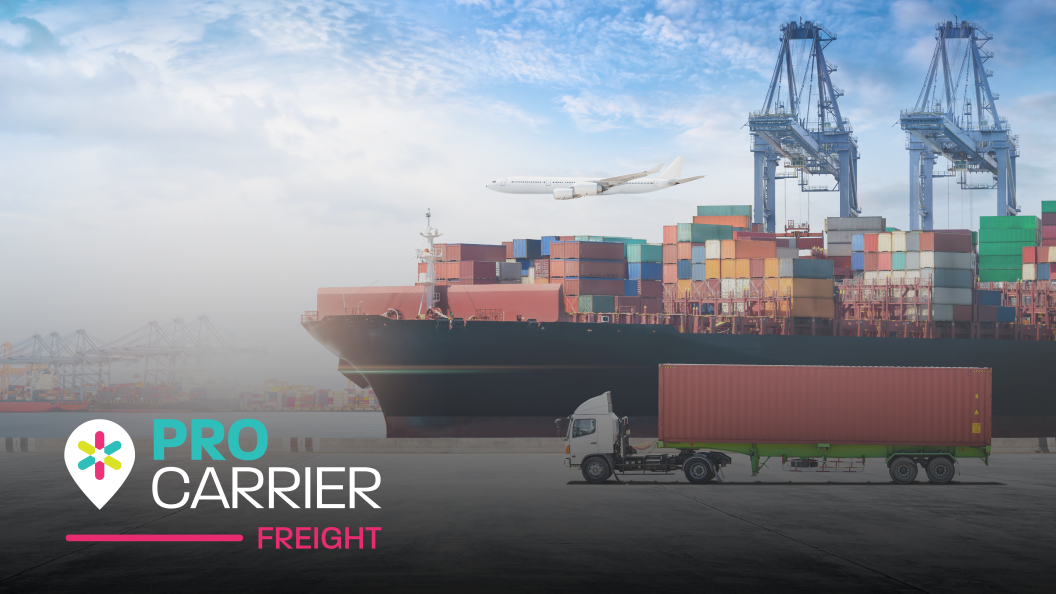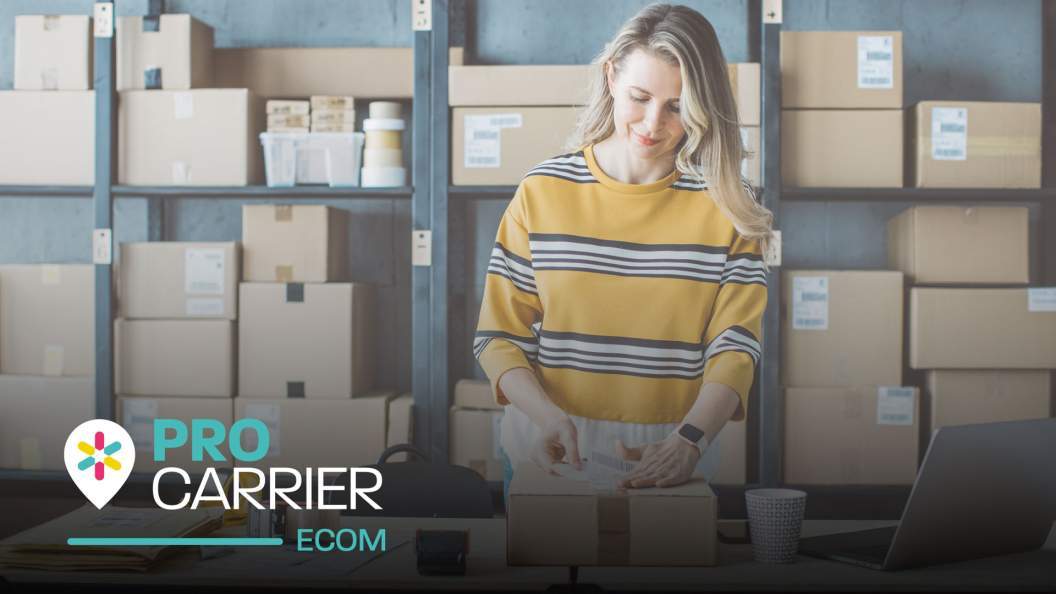Table of contents
- Introduction
- What is IOSS?
- What Are the Benefits of Sending Goods via IOSS?
- What Are the Requirements to Use IOSS?
- How to Register for IOSS and Get an IOSS number
- Registering Your IOSS Number with HMRC
- How do I Use My IOSS number?
- What happens if I don’t use IOSS?
- Alternatives to IOSS
- Send IOSS With Pro Carrier
Introduction
Fed up with how difficult it is to collect and pay VAT when selling into the EU? Then you need to know about Import One-Stop Shop (IOSS). As long as you qualify, you can use this new system, introduced in July 2021, to simplify the process.
In this article, we’ll explain what IOSS is, how it works, why you should use it and how to register.
What is IOSS?
IOSS stands for Import One-Stop Shop. It is an electronic portal and accompanying import system that streamlines the VAT obligations of non-EU businesses selling into the Union. It allows businesses to report and pay VAT via a single portal rather than with each individual country.
The system is designed to simplify the declaration of low-value goods worth up to €150 from outside the EU.
The EU introduced IOSS to simplify cross-border trade on 1st July 2021 - the same day it introduced new VAT changes. Previously, no VAT was due on commercial goods valued up to €22. From the 1st July, however, all goods valued up to €150 would be subject to VAT.
As a result of using the IOSS system, retailers show the price of goods and the VAT amount when the order is placed, allowing the customer to pay upfront in full. The VAT calculation is made on where the goods will be delivered. If they are sent to Germany, for instance, VAT will be charged at 19%. If they are sent to Luxembourg, VAT will be charged at 17%.
Non-EU companies aren’t the only ones that can use IOSS, however. EU-based businesses that import from third countries into the EU can also use the system.
What Are the Benefits of Sending Goods via IOSS?
IOSS is a very effective solution to VAT issues that benefit both retailers selling into the EU and their customers.
For businesses, it streamlines what was once a complicated and cumbersome process. Rather than report VAT to each of the 27 EU tax authorities, businesses now need only submit one monthly IOSS VAT return to the authority where they registered. Submitting only a single VAT return saves a huge amount of stress and can significantly reduce overheads.
IOSS can also reduce custom clearance times for retailers. Goods imported using this system are only checked for a valid IOSS number (more on this below) before they are sent on to the customer. Goods sent without using this system or DDP can only be cleared when the customer has paid VAT.
For customers, there are no nasty additional fees or surprises. Shipping via IOSS means the price they see on the website includes VAT and is the total price they’ll pay. They also won’t need to go through the hassle of paying VAT when receiving their goods in their home country. Faster customs clearance will mean they get their items quicker, too.
What Are the Requirements to Use IOSS?
IOSS is available for B2C cross-border eCommerce shipments that originate outside of the EU and are worth €150 or less.
When using IOSS, you must display the VAT amount to be paid by the consumer when finalising the order and collect that amount prior to delivery.
Businesses must submit a monthly electronic VAT return via the IOSS portal of the company they registered with and keep records for ten years.
How to Register for IOSS and Get an IOSS number
Registration for IOSS can be done via the IOSS portal of any member state. If your business is not based in the EU, however, you will need to appoint an EU-established intermediary to act on your behalf. An intermediary is defined as any taxable person based within the EU. They can be used to fulfil your obligations, including declaring and paying VAT.
Registering Your IOSS Number with HMRC
If you register for IOSS and sell goods in Northern Ireland, you’ll need to notify HMRC of your registration number.
By doing so, you can account for supply VAT on sales of goods into Northern Ireland on your IOSS return. You will also not account for import VAT when entering the goods into Northern Ireland.
You can register your IOSS number with HMRC on their website. You’ll need your IOSS registration number, the EU country you’re registered in, your business details and UK VAT registration number.
How do I Use My IOSS number?
Once you’ve registered and received your IOSS number, you can start using it to streamline sales to the EU. For starters, you’ll need your IOSS number when you or your intermediary make VAT declarations to the relevant EU tax authority.
You will also need to include your IOSS number on all invoices and waybills. Your courier or logistics company will use your IOSS number when clearing customs in the destination country.
What happens if I don’t use IOSS?
You don’t have to use IOSS, the system is voluntary. Unless you use a suitable alternative, however, your buyers will have to pay VAT and customs clearance fees before they can receive their goods. In some cases, consumers may refuse the delivery of goods if they aren’t aware of the additional costs when making the purchase. This can result in chargebacks to retailers, return fees and other associated costs.
Alternatives to IOSS
IOSS isn’t the only way to streamline VAT when selling items into the EU. You can also send goods DDP. Delivery Duty Paid means you calculate and collect VAT at the point of purchase, just like you do with IOSS.
DDP isn’t available for all EU locations, but it is the only solution if you are sending goods valued at more than €150.
Send IOSS With Pro Carrier
Whether you want to send goods IOSS or DDP, Pro Carrier can help. We’ll assist you with the IOSS registration process, acting as your intermediary to make sure everything goes smoothly. We’ll also collect your EU sales data and submit VAT returns to the respective authority.
Find out more about our services here or speak to a consultant to get started.



